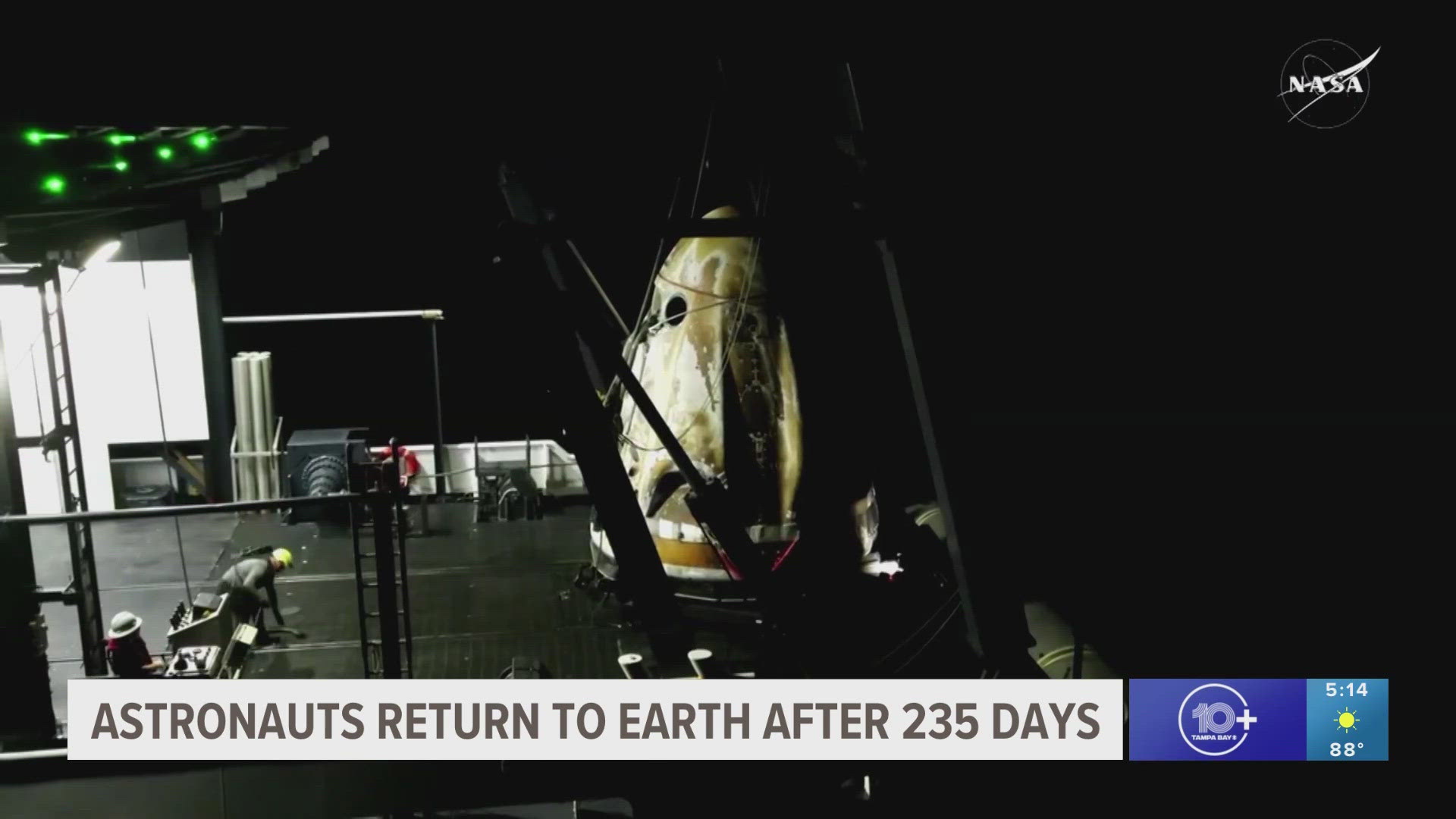CAPE CANAVERAL, Fla. -- Glowing hot spots. Bubbling cloud tops. Flashing lightning.
A satellite launched Thursday from Cape Canaveral will see these severe weather indicators more vividly and frequently, expanding to the western United States high-resolution views of wild fires, tornadoes and other potentially life-threatening events.
Along with a twin satellite launched in 2016, National Oceanic and Atmospheric Administration officials say the next-generation spacecraft offer a “quantum leap” in forecasting technology, akin to upgrading from black-and-white to high-definition color television.
“This means, quite frankly, more lives are saved,” said Stephen Volz, NOAA’s director for satellite and information services.
A nearly 200-foot United Launch Alliance Atlas V rocket shot from Cape Canaveral Air Force Station’s Launch Complex 41 on time at 5:02 p.m. Thursday.
Firing a main engine and four solid rocket motors generating more than 2.2 million pounds of thrust, the rocket trailed an arc of exhaust high over the Atlantic Ocean as it rumbled to the southeast.
A successful launch was confirmed three-and-a-half hours later, when the rocket deployed the satellite called GOES-S in orbit.
It's the “latest and greatest” in NOAA’s Geostationary Operational Environment Satellite program, and the second in a four-satellite constellation valued at more than $10 billion through 2036.
The Lockheed Martin-built satellite was on its way to an orbit more than 22,300 miles above the equator. Late this year, after months of tests, it will start covering the western U.S., Alaska and Hawaii as GOES-17, or GOES-West.
Together with GOES-East, the "eyes in the sky" will watch over nearly the entire hemisphere from the west coast of Africa across to New Zealand.
Advanced cameras provided by Melbourne-headquartered Harris Corp. allow the satellites to scan the full disc of Earth up to five times faster, with four times better resolution and three times more data.
Upgraded coverage and capabilities
The 11,500-pound GOES-S satellite resembles its GOES-R sibling, which launched from Cape Canaveral in November 2016 on an Atlas V and was renamed GOES-16 or GOES-East after a period of on-orbit testing. Weather forecasters across the nation leaned on its modern capabilities during 2017's deadly hurricane season, taking advantage of its high-definition, rapid-fire transmissions to learn more about hurricanes Harvey and Irma, to name a few.
After liftoff, GOES-S will follow a similar formula – ascension to geostationary orbit more than 22,000 miles above the equator, on-orbit testing, then a renaming to GOES-17 or GOES-West.
The Lockheed-Martin built satellite will focus on the western United States including Hawaii and Alaska, but its instruments can gaze across the Pacific Ocean all the way out to New Zealand. GOES-16, meanwhile, was tasked with standing watch over the eastern U.S. and Atlantic Ocean out to Africa.
The combined target areas mean the two next-generation spacecraft have a nearly complete view of the Western Hemisphere with modern tools that capture high-definition images several times faster than legacy weather satellites.
"These satellites are giving us the ability to look at some storms as often as every 30 seconds, allowing forecasters to see storms as they're developing instead of after they've already taken place," said Tim Walsh, system program director for the GOES program.
But the satellites don't just look at storms, Walsh said, noting that previous images by GOES-16 picked up on fire activity in California before authorities had even been alerted.
"We're seeing fires before they're reported on the ground," he said. "Some of the information we're getting from 22,300 miles away is giving us information on the ground that is incredibly vital."
GOES-S also features two other Lockheed Martin-built instruments that track lightning – including cloud-to-cloud activity – and, on the reverse, observe solar activity.
But its primary instrument, the Advanced Baseline Imager, or ABI, and the GOES ground systems have their roots in a company that calls the Space Coast home: Melbourne-based Harris.
A Space Coast connection
Harris, which designed and built imagers for previous generations of weather spacecraft, was selected to provide the modern ABI currently installed on the satellite that will eventually expand to 20 feet long after solar array deployment.
"It takes pictures," said Paul Griffith, chief solutions engineer with Harris' Space and Intelligence Systems division. "It just takes them much more rapidly and in many different colors and with much better resolution than the past imagers."
Harris' responsibilities, however, don't end with launch as it also manages GOES ground systems, which receive and interpret data from the satellites for dissemination to forecasters, scientists and others. The company operates centers in Maryland and Virginia with a backup location in West Virginia.
Griffith said the ground systems are just as crucial as the spacecraft themselves, noting that without sufficient processing power, for example, it wouldn't matter how high-resolution the images are – they would be bottlenecked before getting to forecasters.
Atlas V launch vehicle
More than 2.2 million pounds of thrust will boost GOES-S off the pad thanks to Atlas V's Russian main engine and four strap-on solid boosters, marking the 76th overall launch of the rocket. The mission, a joint venture also managed by NASA, is the agency's 16th flight on Atlas V.
The rocket includes a five-meter protective nose cone, which is the largest ULA currently offers.
"The first GOES launch was in 1975," said Scott Messer, ULA's program manager for NASA missions. "We at United Launch Alliance are proud that either our current or one of our heritage vehicles has launched every GOES satellite that has ever launched."



